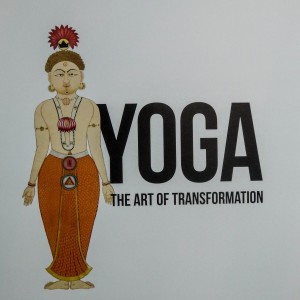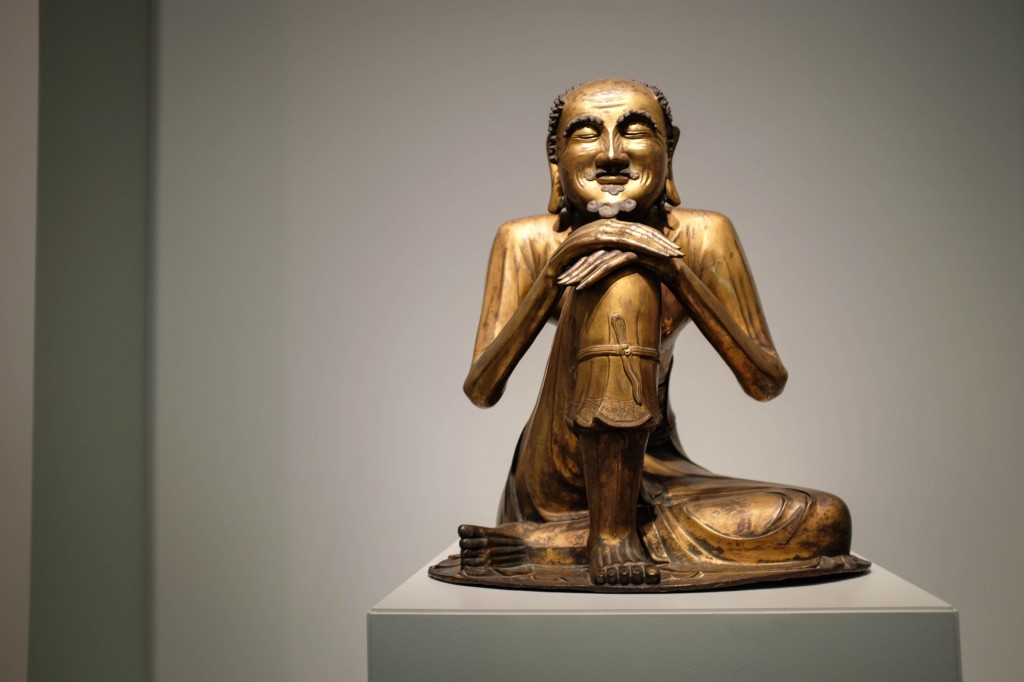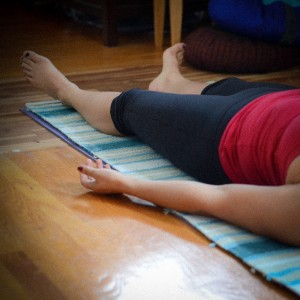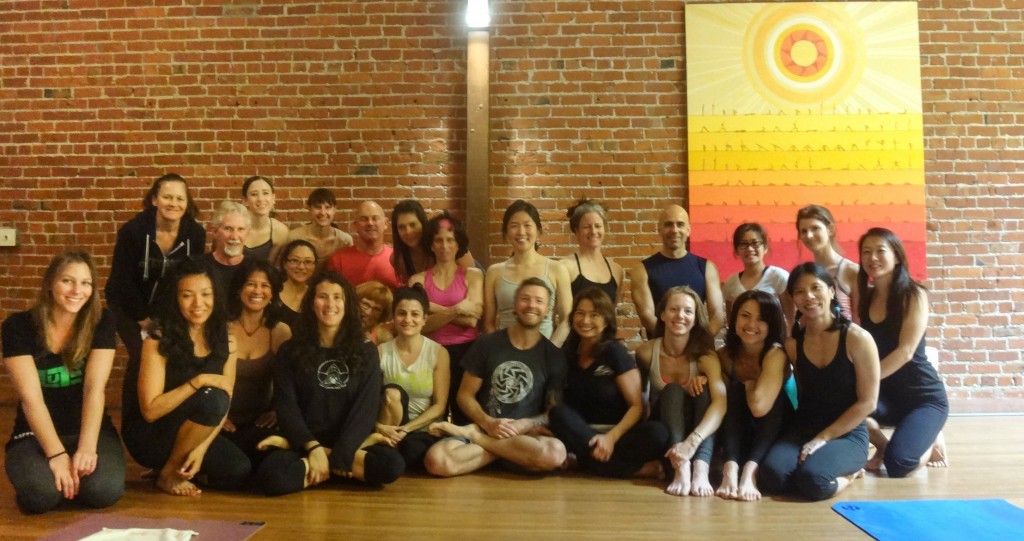Posts by Juls
Life on the Mat after a weekend Ashtanga Yoga Intensive
This past weekend, I attended an amazing Ashtanga Yoga Intensive with master Ashtanga teacher and practitioner, David Robson. Teaching from a traditional approach to the method, we were given a slew of information on all sorts including (but not limited to) the Vinyasa count, marrying the movement to the breath for a floaty practice, and jumping back and jumping forward.
I had so much to think about when I rolled out my mat in Mysore today. The various teachings all swirling in my head: alignment, timing the movement with the breath (and not the reverse), maintaining the bandhas throughout, not letting the distractions take your mind on a detour, etc. All good, to a point, but I noticed this swirling of lessons becoming just another form of vritti distracting me from the work.
It started out quietly but began building as I progressed through the series. Before long the chatter of what I am not doing became so much that I started murmuring under my breath. I caught myself, and hoped the guy beside me was too focused to have noticed too. Then I directed my mind back to the breath. It was a bit much. Yet, I tried not to judge and didn’t let myself give into it. I noticed it, even noticed myself noticing, then returned to the breath.
Inhale, Exhale, Inhale, Exhale…
My breaths today were quick in places (as is often the case) but I adopted David’s advice to stick with the traditional count — rather than my previous approach of doubling the breath count to make up for my shorter breaths. I noticed an attachment to the poses, as I forced myself to move to the next in the sequence before my back had gotten a chance to release.
It’s a new approach but I think there’s a good lesson for me here. Of course it helps to keep track of the count; there were a few times in the seated poses where I noticed I was on six and had yet to lift my head.
As for lifting up and floating back… Read More
Today’s Lunch: Seated Postures
This morning, I came to my mat in a lot of discomfort. Possibly from yesterday’s full primary on Dave Robson’s much longer breath count, but more likely from too many weeks between chiropractic adjustments. To be honest, this soreness has been building for a couple of weeks now and, although I have been hitting my mat daily, I could feel more than one area of my spine which didn’t quite seem to move as easily as it used to. After about 35 minutes of the sequence, which equated to the Suryas and the standing poses, I abandoned all efforts and sat down on my mat to meditate.
I resisted the urge to beat myself up for giving up on it so early on. I just let it be and got up for my morning espresso.
A couple hours later, I found myself longing for just a little more. Without a change of clothes, I found myself headed towards the yoga studio with plans to pop into mysore in my jeans for a do-over. If I only did the Suryas again, I would have been happy but… as I got closer to the studio I remembered that Friday’s practice was lead Full Primary and I was too late to join. *sigh*
My chiropractor managed to find all my stiff areas and got them all moving again by the time I hopped off his table. My low back was still feeling stiff as I drove off to work – but the rest of me felt better. I immediately began devising a plan to roll out my mat during my lunch break. The package of tuna in my file cabinet would have to suffice for nourishment as it was movement or eating (one or the other).
I found an empty conference room at lunchtime and began going through the motions at the top of the hour. I immediately noticed the difference in the range of motion in my upper back. I went through Surya A & B then moved straight to the seated postures as I’d done the standing series already today. I celebrated successfully getting my ankle to tolerate Marichyasana B and C on my left side – the first time in ages. I finished up with Navasana and stopped there as my break was over.
It was all good. Feeling relief, I returned to my desk. And it didn’t matter that my tuna package was only a measly 80 calories worth of nourishment. I was sure I could find something else to satisfy my need for food if I needed to. For it seemed that today, it wasn’t food as much a movement that my body was hungering for.
Yoga, Art, and Transformation
 Yesterday, my sweetheart and I put off our daily practice until evening and headed to the city to check out the latest arrival to the Asian Art Museum “Yoga: The Art of Transformation.” As expected, it was truly inspirational. I haven’t any photos of the pieces on display in the three galleries as photography of any kind is not allowed. However I can attest that a visit, especially for you yogis and yoginis in the Bay Area, is well worth the drive.
Yesterday, my sweetheart and I put off our daily practice until evening and headed to the city to check out the latest arrival to the Asian Art Museum “Yoga: The Art of Transformation.” As expected, it was truly inspirational. I haven’t any photos of the pieces on display in the three galleries as photography of any kind is not allowed. However I can attest that a visit, especially for you yogis and yoginis in the Bay Area, is well worth the drive.
I have been realizing that years and years of study may only skim the top of all there is to learn about yogic history and philosophy. At my rate, the level of understanding comes even slower… or so it seems. In touring the exhibit, I was pleasantly surprised at how much I had come to know. Perhaps there is some sort of transformation happening after all.
My advice to those who venture to the city for this exhibit is to also check out the gallery on the third floor. There are a whole lot of cool pieces to check out. One of my favorites is this statue of “The Buddha Shakyamuni as an ascetic.” I love his blissful smile and relaxed posture. It made me want to head out to find a tree to sit under and meditate for a bit.
Falling out and Falling IN
One of the key components of Ashtanga yoga involves keeping our eyes focused on a particular gazing point or “dristi.” This one-pointed focus is designed to pull your attention off of the world around you thereby assisting you in focusing within. I have experienced great difficulty in keeping my attention off of my surroundings. This is primarily due to my “falling out” of the pose when I let my gaze move from the wall to the tip of my nose.
In those few moments where I have successfully kept my focus on the prescribed point of focus has lead to some interesting observations. For one, when your eyes aren’t tethering you upright in space (whether your forward folding or upright, symmetrical in space or revolved) you must rely on your abdominal muscles to find balance. Another thing I’ve noticed is a reduction in pushing or pulling myself further into any given pose. I think this is because you can’t quite tell how far into the pose you are; you’re too focused on trying not to tip over.
 Even though I have experienced the benefits, I still find it a difficult task. Perhaps this is because breathing properly, with bandhas engaged, the diaphragm moving up and down, and air actually entering my lungs takes a insurmountable amount of energy. And then there is the asana: the posture, alignment, entry, exit, etcetera, etcetera. It’s endless. It’s hard. And still…
Even though I have experienced the benefits, I still find it a difficult task. Perhaps this is because breathing properly, with bandhas engaged, the diaphragm moving up and down, and air actually entering my lungs takes a insurmountable amount of energy. And then there is the asana: the posture, alignment, entry, exit, etcetera, etcetera. It’s endless. It’s hard. And still…
When my practice is done, I am left completely at ease. For a moment or two, I am able to “fall IN” and just be. That, my dear friends, is good.
Push or Pull?
Yesterday, my teacher posted an article titled “Reasons Your Ashtanga Teacher May Not Be Giving You More Poses.” Since I have all the poses I need right now, I did not open it up right away. Later in the morning, I clicked to the article for all the articles she refers to us generally have some helpful bit of information for me to glean. While reading, I pretty much nodded my head as went down the list…until I came upon the item about pushing too hard. I paused, remembering a conversation that occurred during Monday’s Mysore practice.
T: You aren’t pushing are you, Julie?
M: Pushing?
T: Yeah, pushing?
M: My leg?
T: No. You?
Giggles were heard coming from a nearby mat or two. My yogini friends who know my long standing endurance athlete tendency to push aggressively towards any and all goals. Honestly, in this instance, I didn’t think I was pushing – or pulling for that matter. But when she told me to soften I felt myself relax right onto my exended leg in Janu Sirsasana to such an extent that I could easily grasp the forearm of my outstretched arm. My whole body oo-d “Ahhh” as my teacher assisted me in the magical way she does.
I was still a little dumbstruck when she walked away to assist the next person. I moved on with my practice, trying to be mindful of not pushing yet careful to stay engaged (physically and mentally) where appropriate. Since I am still in a situation where I must to rely on my home practice to maintain a six-day-a-week practice, I need to learn to recognize when I am being too aggressive. It’s funny – because I spent much of my marathoning days racing hard to a point but never quite pushing hard enough to hit my goal.
As I maintain my six-day-a-week practice AND, at the same time, train to build up to a 4 day backpacking trek in the Grand Canyon, this distinction will be valuable on the mat, on the hiking trail, and in life in general. Quite frankly, I think it’s a good lesson for all.

